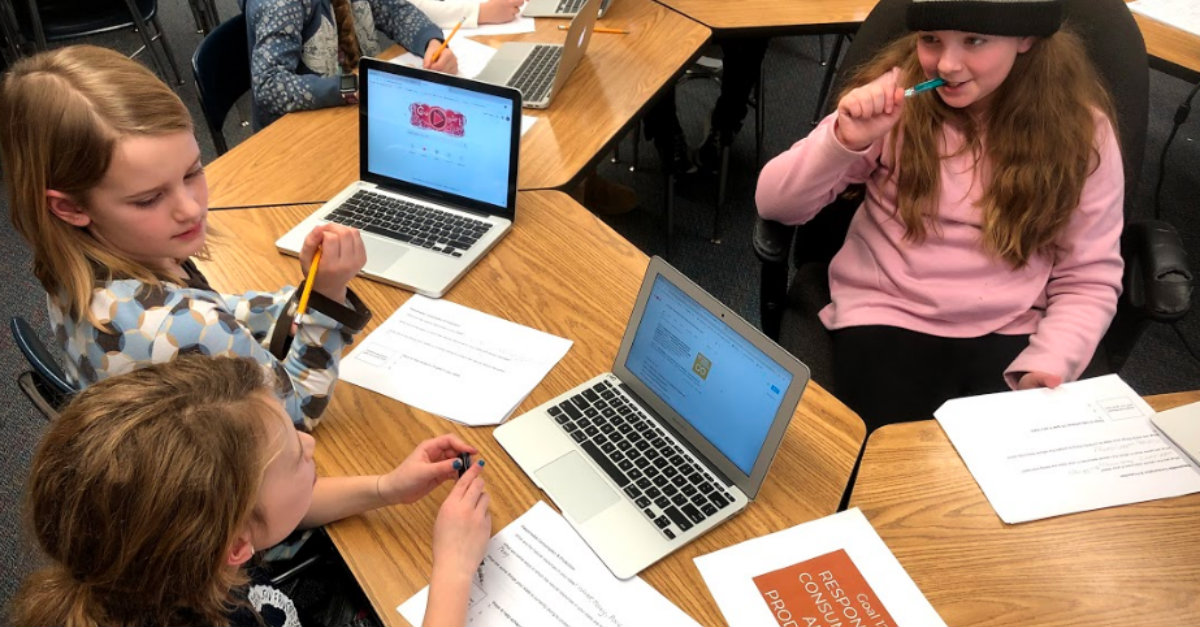You’ve probably heard the old saying, “Many hands make light work.” It’s a reminder that even the most daunting tasks can be accomplished with a little cooperation. We see this all the time in nature; from a cluster of ants building a mighty colony, to a pod of dolphins using teamwork to catch their prey. While many intelligent organisms have successfully incorporated collaboration skills into their daily lives, there remain a few notable exceptions. For example; students.
I’m only half-joking of course. Getting your students to collaborate effectively with their peers can be difficult, but it’s not impossible. Classroom cooperation is a process. It takes time and practice to transform your classroom into a well-oiled teamwork machine. Yet, despite all the tips and tricks a teacher may employ, success ultimately depends on whether you and your students are prepared to build a space of mutual respect and understanding. Is your class up to the challenge? If so, here’s some advice on how to begin:
Establish Ground Rules
The first step is to establish some ground rules. Students should know upfront how they’re expected to treat and communicate with one another. It’s also important for the students themselves to play a part in developing these rules. Simply tossing out some homemade guidelines won’t get your class invested. Instead, make them part of the process. Once they’ve amassed the right ideas, you can record and display them for the benefit of all.
From there, have your class take part in team-building exercises. Give them a chance to talk about their life outside of school. By inviting students to open up and share about their personal lives, you’re letting them know that this is a space where they can find support. This deeper level of interaction will motivate them to share their thoughts and ideas more often, particularly in regard to the lesson material.
Finally, be sure to notice and reward productive talk. We all know how easy it is for students to get sidetracked when they break into small groups. Move among the teams, then acknowledge and reward those who communicate well with one another. Small incentives can go a long way to producing a meaningful, coordinated effort.
Use Teacher Talk Moves
Questions are the building blocks of education, but students need to hear the right questions first. To get their minds moving in the right direction, try using specific prompts to generate classroom discussion. Queries like, “Who can rephrase or reshape this idea?”, “Do you agree or disagree? Why?”, and “Is there another explanation?” are open-ended and invite plenty of debate. Don’t be afraid to manage their silence either. Students hate an awkward silence as much as the next person. If you can outlast their reluctance, they’ll eventually fill the space with an answer.
Lastly, be sure to clarify statements made by your students. Don’t let them settle for a vague or half-formed response. Make them think about their answer. Flesh out the details until it’s a fully defined idea which can stand up under scrutiny.
Ensure Active Collaboration
There really is no substitute for experience. If you want your class to start collaborating, get them out of their seats and keep them moving. One suggestion is a gallery walk. Any time you have a group of students working with information on a whiteboard or in a journal, encourage them to do a gallery walk and observe each other’s progress. This is a nice thing to do once the culture of risk-taking has been established. It not only fosters creativity but allows students to learn from their peers as well.
Another quick, easy strategy is “give one, get one.” If you have a response, ask students to supply two more with help from a fellow classmate. This shows them how they’re better off when working together, and that if they ever want something from a person, they’ll need to give something back in return. Overall, it’s a good technique for developing life skills as well as collaboration skills.
Use Technology
Finally, if you want your students to collaborate successfully, don’t neglect modern technology. These days, classrooms are awash with useful tools for cross-curricular growth and cooperation. Screencasting is helpful for students who hate to be on camera and may need assistance when presenting their work to peers. Websites such as screencastify.com or screencast-o-matic.com are great tools to get started with screencasting. FlipGrid is a great resource for formative assessments, since it allows students to record their knowledge of a particular subject and share the recording with you. And as a bonus, you can set a time limit for the responses, so you spend a few minutes watching videos instead of hours grading papers!
Even Skype has a role to play in the classroom. Are your students more comfortable asking questions to someone over a video call? If the answer is yes, try calling volunteers or experts over a video device and let your classroom do the rest.
Of course, none of these steps are foolproof, and success won’t come over night. However, with a little patience and a bit of persistence, you’ll see your classroom transform into a place where creative collaboration truly thrives!
What about you? How do you promote creative collaboration among your students? Share your tips in the comments below!
Content for this blog was drawn from the webinar Let’s Talk! Practical Strategies to Develop and Enrich Student Collaboration Skills with Terra Tarango.


